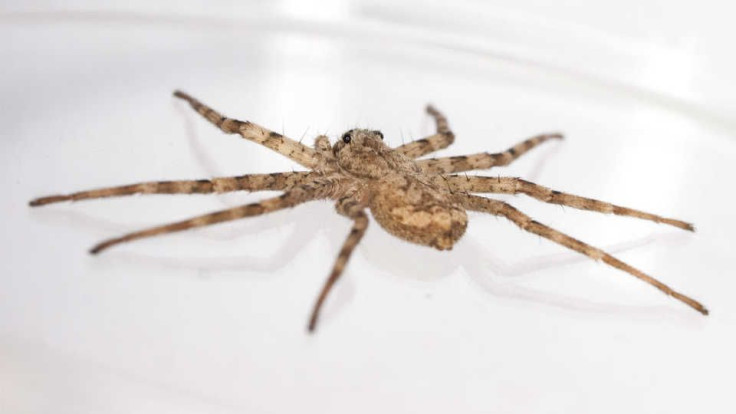Watch An Attacking Spider Spin Horrifyingly Fast In Slow Motion

Scientists took high-speed footage of a flattie spider on the attack, capturing what they are saying is one of the fastest spins in the animal kingdom.
They have been measured turning up to 3,000 degrees per second — more than eight full turns, according to the California Academy of Sciences.
The secret to their quick spin is in their form. The academy noted that they pull in their legs like a ballerina or a figure skater holds their arms in close to speed up.
And as the flattie spider spins, it pivots toward its victim to get closer and to infuse more torque into its motion.

“We found that the leg nearest the prey anchors to the ground, creating a leverage point from which the spider can pull in its torso closer to the prey,” researcher Yu Zeng said, according to the academy.
The scientists called the spider’s leg-turn the world’s fastest on land.
“Only about half of all spiders use webs to catch prey,” researcher Sarah Crews said in the statement. “Some stalk and pounce, while others are sit-and-wait ambushers — like flattie spiders.”
Also known as wall crab spiders, flatties are found all around the world. They have eight eyes but use changes in the air to identify when prey is near.


The scientists’ study in the Journal of Experimental Biology referred to them as “a group of sit-and-wait ambush predators found on open surfaces.”
They are looking at the slow-motion footage of the spinning spiders for clues on how to enhance robots and help them move around in tight spaces.
“Drawing inspiration from biodiversity like flattie spiders can lead to fascinating technological insights,” Zeng said.
According to Crews, the spiders are an unstoppable force.
“Flattie spiders are always one step ahead in this evolutionary arms race between predator and prey,” she said. “If the prey are positioned further away, spiders move faster both linearly and with increasing rotational speeds — there’s truly no escape.”
© Copyright IBTimes 2025. All rights reserved.



















